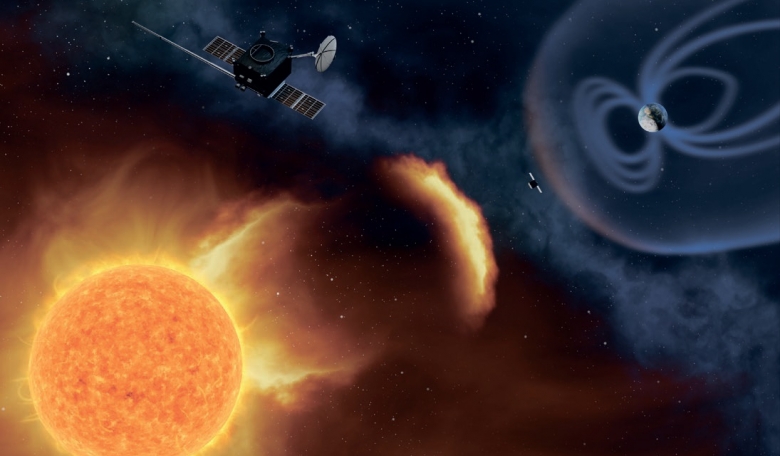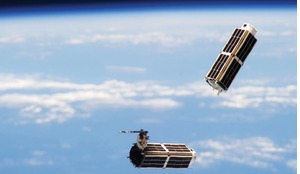Warnings that the world needed to prepare itself for a global pandemic were largely ignored prior to COVID-19. In the same way potential threats from space weather to an increasingly technology-dependent world are still only paid cursory attention, despite the disruption it could cause to daily life on Earth. According to financial risk manager Calogero Nicosia it is a threat that should be taken seriously and not only by those within the space industry.
From my perspective in the risk management industry it seems the potential of extreme space weather to disrupt modern day life on Earth has largely been ignored until now, a scenario not too dissimilar to the unheeded warnings of a global pandemic.
For the asset management industry the worldwide COVID-19 pandemic has shown the importance of having a solid Business Continuity Management (BCM) framework in place.
Back in March 2020 the industry, like countless others, experienced one of the most significant operational shifts ever and in just a few days asset managers had to transition their workforce from offices to homes. At the time of writing (late spring 2021) many are still in this situation.
One side effect of the pandemic is that we now fully appreciate, even if we didn’t before, how crucial space-based technology is to our industry. In contrast to businesses in other spheres, it has offered us a certain resilience, essentially meaning we have been able to continue to communicate and operate. This increased awareness of our technological dependency is now pushing the industry and regulators to think how to improve BCM and how to strengthen operational resilience.
Now, think for a moment what could cause a shutdown of systems and communication? It could be the result of a cyber attack, or it could also be the result of a severe geomagnetic storm due to solar activity. Even if the probability of the latter is low, it should not be totally ignored.
For the asset management industry the worldwide COVID-19 pandemic has shown the importance of having a solid Business Continuity Management (BCM) framework in place
Furthermore, an even more important lesson that we can learn from COVID-19 is that we should listen more and pay attention to global concerns coming from the international scientific and space communities. This should not only be the case for public health threats but for any other global threats, such as space storms, which could affect life on Earth.
It is important to remember that the impact of not listening to advice from scientists can bring humanity to the brink of destruction. Another very current example is climate change - we are only now slowly moving in the right direction and that is mainly because in all parts of the world we are experiencing year after year an increase in extreme weather events.
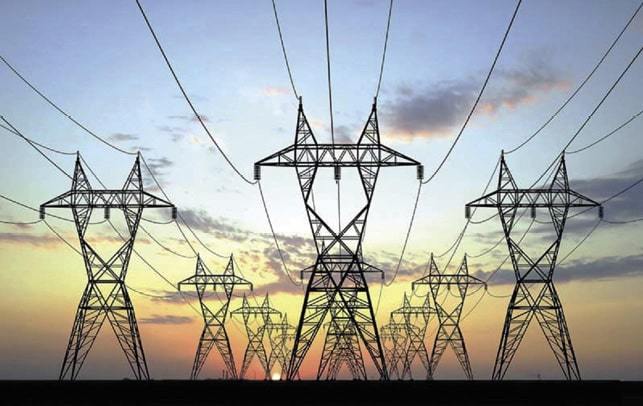 A severe space storm can affect power grids and communication systems.
A severe space storm can affect power grids and communication systems.
The danger posed to human activity by extreme space weather should now be added to the lessons from COVID-19 and our ongoing attempts to combat climate change. It is my view that space weather events should be considered more seriously than ever before, especially in a world where certain industries and businesses, like asset management, are so dependent on computers, the internet and communications.
Space weather events
The source of space weather events on Earth is the Sun. It produces bursts of electromagnetic radiation (called flares) and eruptions of material known as coronal mass ejections (CMEs), accompanied by solar energetic particles (SEPs). Because of the interaction of CMEs with the Earth’s magnetic field, a geomagnetic storm can be generated.
Three main types of space weather events are typically recognised: radio blackouts, solar radiation storms and geomagnetic storms.
Radio blackouts occur when a strong burst of x-rays from a solar flare hits the Earth’s atmosphere. These x-rays can affect both high and low frequency radio signals by disturbing Earth’s ionosphere through which radio waves travel. The strongest radio blackouts can totally shut down radio communication and GPS for hours at a time. The degradation of signals can affect aviation and all other systems which depend on such technologies, including finance activities like high frequency trading.
A solar radiation storm, also called a solar energetic particle (SEP) event, is simply a strong flow of radiation from the Sun hitting Earth. Both CMEs and solar flares can create and carry such radiation, made up of protons and other charged particles. Even if such radiation cannot directly reach humans on Earth, it can harm humans involved in orbital space activities and can also disturb the areas through which high frequency radio communication travels. During a solar radiation storm, aircraft travelling on routes near the poles can be affected.
Geomagnetic storms occur when certain types of CMEs enter the magnetosphere of the Earth over a prolonged period of time. The solar material in a CME has its own magnetic fields and when interacting with Earth’s magnetic fields in the opposite direction, can create serious issues. In particular, if these fields point southward, in the opposite direction to Earth’s fields, the effects can be dramatic - the whole shape of the Earth’s magnetosphere can change!
NASAIt is important to remember that the impact of not listening to advice from scientists can bring humanity to the brink of destruction
In a second phase (that can last hours or days) charged particles sweep into the magnetosphere accumulating more energy and speed as the particles penetrate closer and closer to our planet. During this phase auroras can be seen at much lower altitudes than normal. The increased and lower altitude of radiation can, at this stage, seriously damage satellites in orbit around the Earth. During the final stage of a geomagnetic storm the magnetosphere returns to its original state.
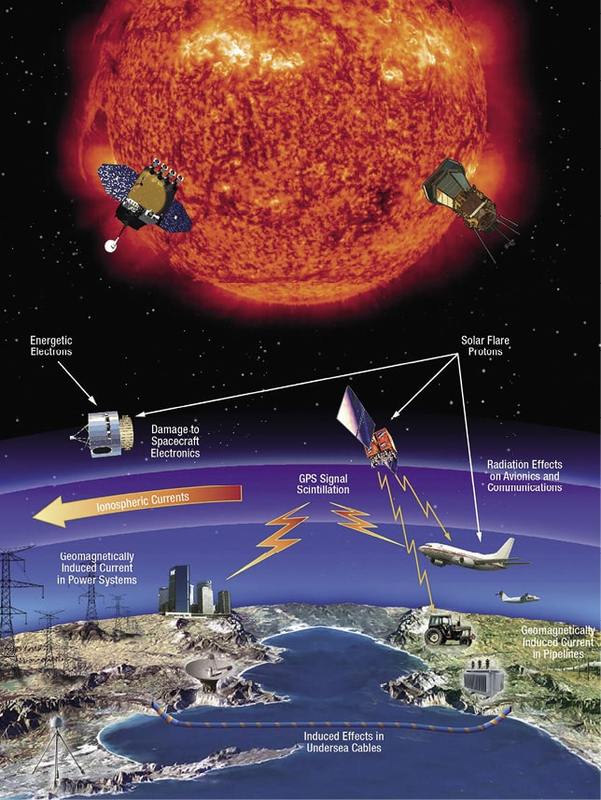 Technological infrastructure affected by space weather events include satellites, aircraft and power grids. Studying the causes and effects of space weather can help us to better predict these events and to take precautions to minimise their impacts.
Technological infrastructure affected by space weather events include satellites, aircraft and power grids. Studying the causes and effects of space weather can help us to better predict these events and to take precautions to minimise their impacts.
In the most extreme cases, geomagnetic storms can hamper space activities and satellite tracking, high frequency radio propagation and satellite navigation systems can be blocked and transformers in power grids can be damaged, causing serious and extended blackouts to entire regions of the world.
As often happens in the risk management discipline, it is important to look at the past in order to understand the potential effect that the occurrence of an event may generate in the future. The most recent space events occurred in July 2012, Oct-Nov 2003 and March 1989, while the greatest on record was in 1859, known as the ‘Carrington event’.
September 1859 - the Carrington event (named after the English amateur astronomer Richard Carrington who observed and recorded its solar flare) is the benchmark for extreme space weather studies. The solar flare, geomagnetic storm and energetic particle flux associated with this event make it one of the largest and most violent on record.
It is important to mention that at the time many crucial parameters were not measured directly. Estimating the strength of the geomagnetic storm associated with the Carrington event has attracted some debate. At the time, the storm caused strong auroral phenomena and damaged telegraph systems, with telegraph machines reported to have caught fire due to the violence of the shock. In contrast, a solar storm of this magnitude occurring today would cause widespread electrical disruptions, blackouts, and damage due to extended outages of the electrical grid.
May 1921 - this is among the most extreme known geomagnetic storms documented with auroras at lowest latitude, along with reports of burned fuses, damage to electrical apparatus and telephone stations, and total communication blackouts lasting several hours.
May 1967 - this storm surprised the military during the climax of the Cold War, when it generated the blackout of polar surveillance radars which led the US military to assume a possible nuclear attack was imminent, until its solar origin was confirmed.
August 1972 - an example of an extreme solar particle event (SPE) which caused severe technological disruptions, including accidental detonations of numerous magnetic sea mines off the coast of Vietnam.
March 1989 - the largest geomagnetic storm of the Space Age causing the well-known failure of the Quebec power grid and damaging two transformers in the United Kingdom.
October-November 2003 - a well-observed and measured complex series of events including one of the largest observed solar flares on record. The overall technological impact is well documented, including a 90-minute blackout affecting 50,000 customers in Sweden.
July 2012 - this CME was not directed towards Earth but, if it had, would have generated a very severe Carrington class geomagnetic storm. It has been argued that this event should be used to create severe space weather scenarios for planning purposes.
Space weather events are of increasing concern and, with the ever growing use of technology relying on satellite communications, the risk of major outage or disruption to daily life must be taken seriously not just by space agencies but also by governments and international organisations.
In 2011 the OECD (Organisation for Economic Co-operation and Development) issued a paper entitled ‘Future Global Shocks’, including implications for risk management from geomagnetic storms. During 2015 the UK government issued a paper ‘Space Weather Preparedness Strategy’ and in 2016 the Obama Administration issued an Executive Order for the federal administration to coordinate and prepare a response in case of an extreme space weather event.
The risk of major outage or disruption to daily life must be taken seriously not just by space agencies but also by governments and international organisations
In addition, regulators in financial markets now seem to be at their first embryonic stage of interest in this topic. A 2014 report, ‘Space Weather and Financial Systems: Findings and Outlook’, was issued by the European Commission’s Joint Research Centre, while the UK Civil Contingencies Secretariat and the US National Oceanic and Atmospheric Administration (NOAA) Space Weather Prediction Center concluded that the vulnerability of the financial services sector internationally to extreme space weather appears to vary, and awareness among operators and regulators globally is currently limited. It is therefore imperative that resilience to space weather across the financial services sector is improved.
We know that extreme space weather events can affect electric power grids, aviation and communication systems but the impact can be broader if you take into account the secondary activities which rely on satellite and internet communication. In this context finance and all of the investment industry could be affected. Think, for example, about high-speed trading where the global navigation satellite systems are commonly used to place time stamps on financial transactions where precision timing is critical.
A severe space storm, able to affect power grids and communication as well as disrupting finance for a couple of hours to a few days, can still thankfully be viewed as a rare event but nonetheless it could happen, especially during a solar cycle maximum. The 25th solar cycle is now underway and, although predicted to be weaker than normal, is expected to reach a peak in July 2025.
The global investment and finance industries should join together with other stakeholders to further research extreme space event risks and how they could impact society. These organisations should prepare plans to ensure financial stability and enhanced resilience in case these extreme space events one day affect the Earth.
It may seem strange for finance to look at the sky but, in the future, human activity will become even more connected to technology which is both directly and indirectly impacted by space activity. After all, it was the Roman emperor and Stoic philosopher Marcus Aurelius Antoninus who said, “the man who does not know that there is a universe does not even know where he is’’.
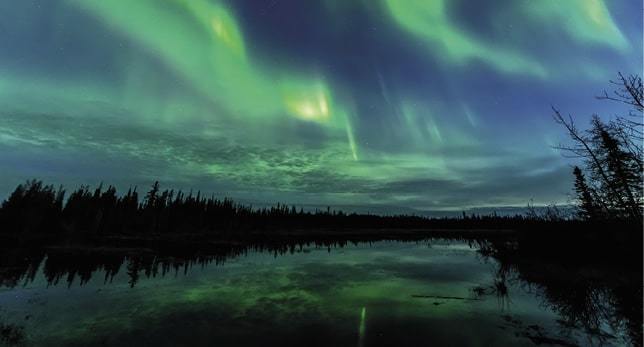 Auroras in morning twilight on 12 May 2021 in Northern Alberta, Canada.
Auroras in morning twilight on 12 May 2021 in Northern Alberta, Canada.
About the author
Calogero Nicosia was born in Italy and now lives in Luxembourg. He has been a risk manager in the investment fund industry since 2014 and he is also adjunct professor at Luxembourg University and, in the past, a freelance contributor for the Geopolitical Monitor. He holds a Masters degree in Economics & Finance and Bachelor’s degree in Management from Luxembourg University. He also holds a graduate certificate in risk management from Sacred Heart University and is FRM certified by the Global Association of Risk Professionals (GARP).





